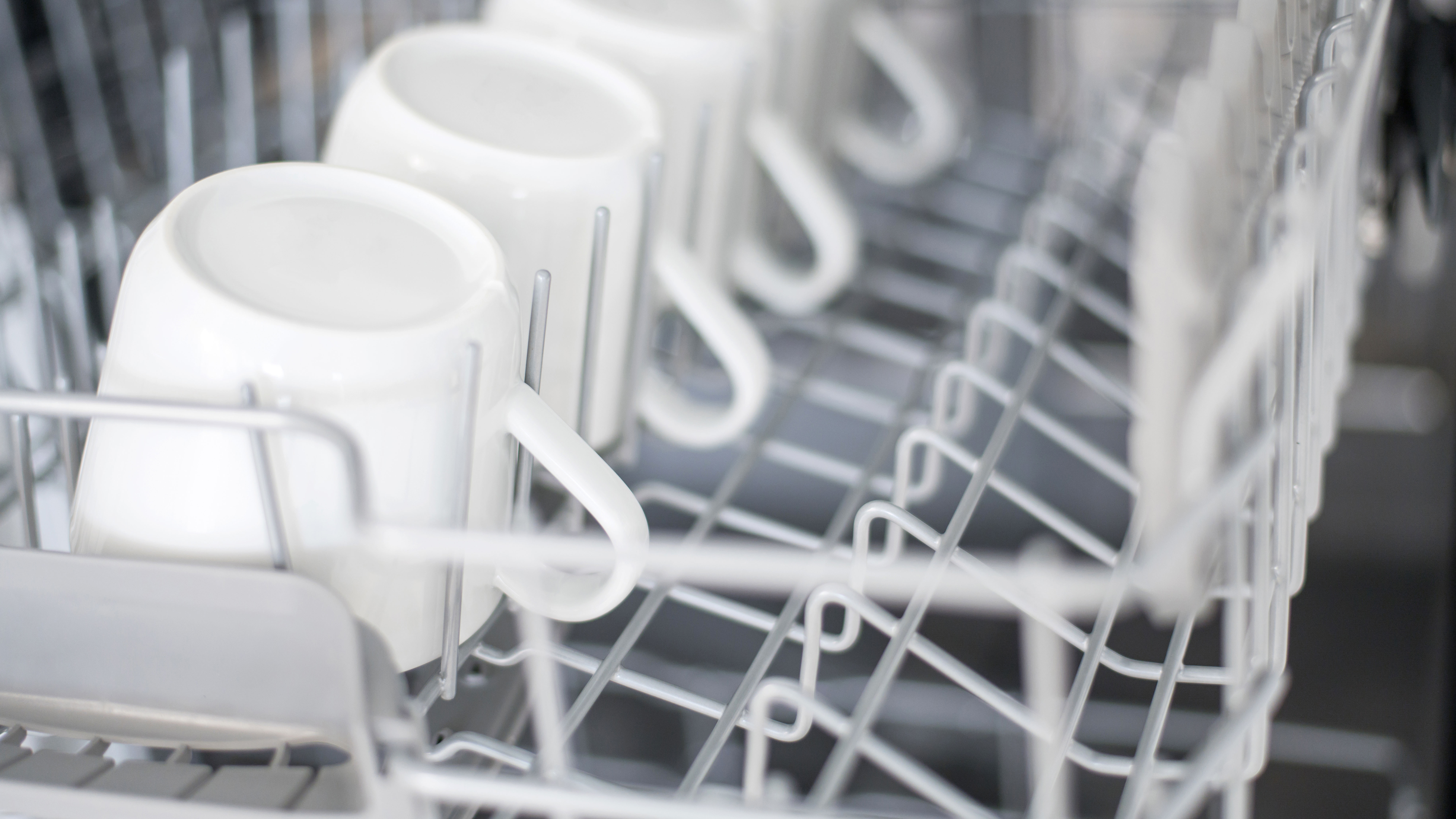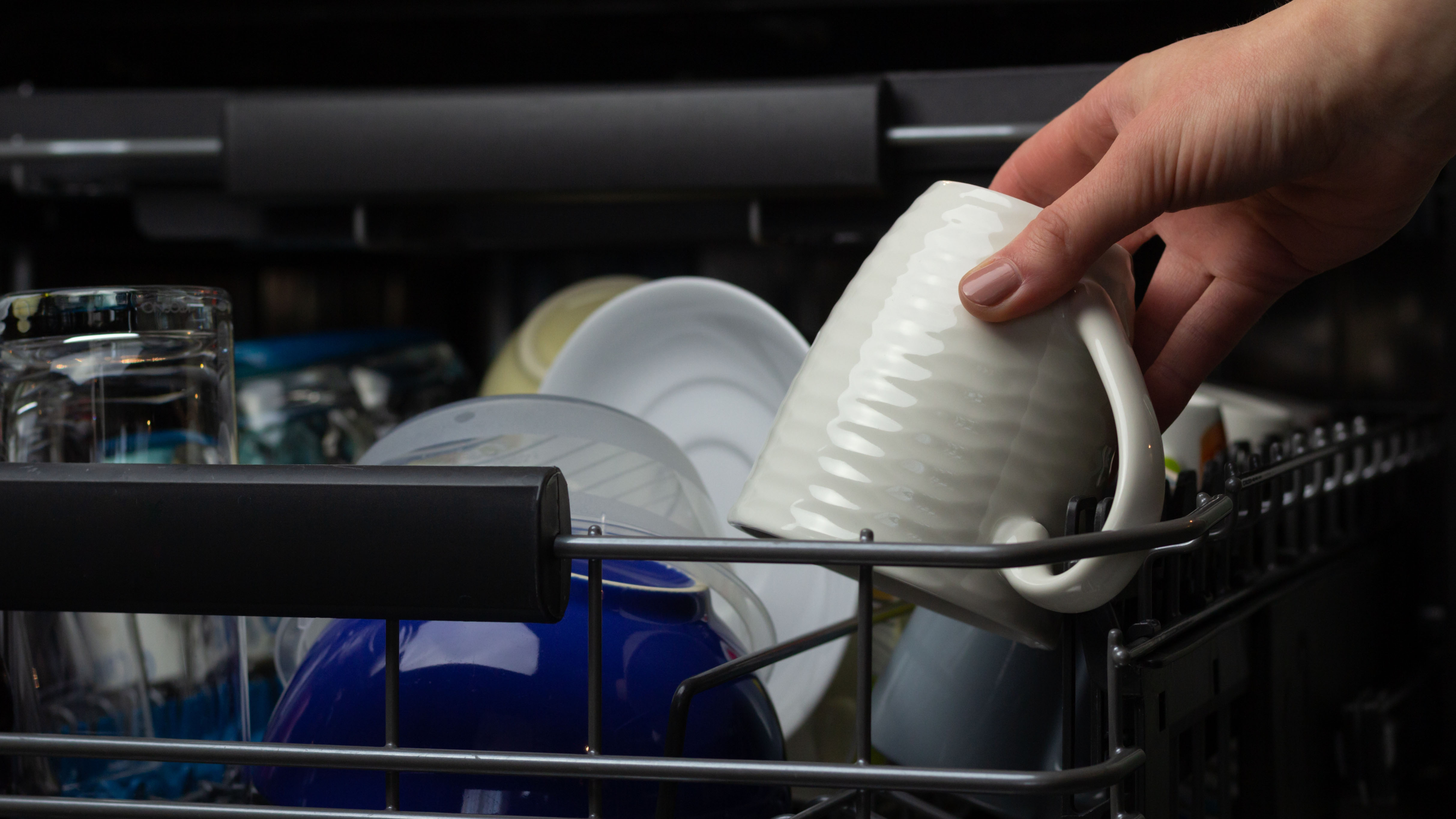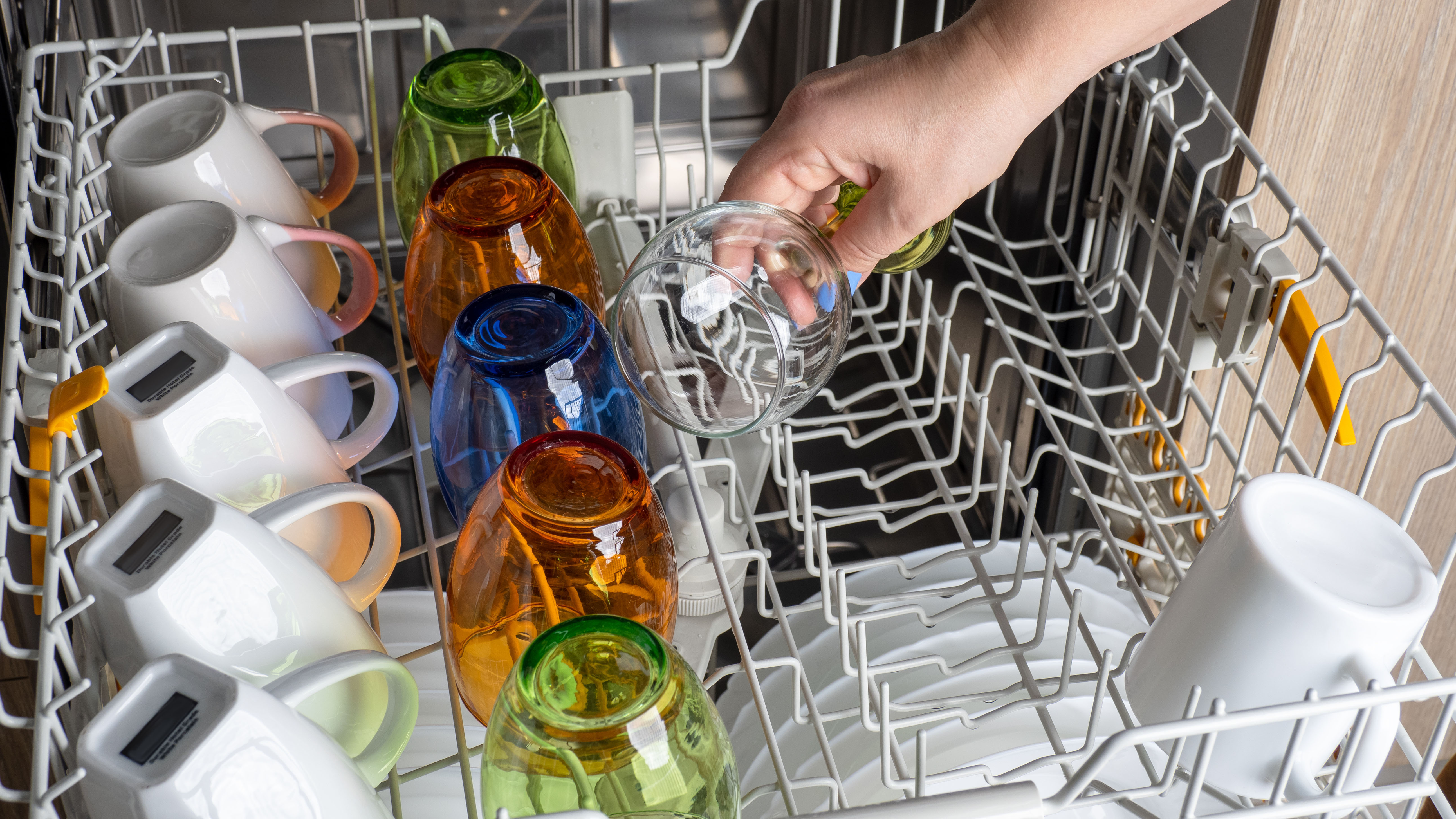This TikTok dishwasher hack will keep your mugs dry
Never wipe a mug dry again with this dishwasher TikTok hack

We all rely on the best dishwashers to clean our plates and glasses day in, day out. And while stain removal is key in a dishwasher’s performance, we sometimes forget that drying is a fundamental part of the cycle as well — something which many models fall short on. In fact, it’s almost expected that some items, such as mugs, will inevitably gather a puddle of water by the end of the cycle, which you need to tip away and dry separately before storing.
But, before you go blaming your dishwasher, this problem can easily be avoided. All it takes is a small change, which was recently highlighted on TikTok. It's such a revelation that this TikTok dishwasher hack has been trending ever since, and it’s something everyone should know. Follow this advice, and you need never worry about wet mugs again.
Why do mugs come out wet from the dishwasher?
Before we go into the solution, we need to understand the problem. There’s a reason certain items won’t dry fully in your dishwasher, and that’s due to their shape. If an item does not have a completely flat bottom when inverted, i.e. the rim forms a shallow dish, water will pool and collect in this space during the wash cycle.

That’s why water often gathers on the underside of mugs and bowls. It can't be drained from this pocket and so the item can’t dry effectively, resulting in a small, inconvenient puddle when it comes to unloading time. This happens whenever there’s an opportunity for water to collect — if you’ve ever made the mistake of loading a glass the wrong way up, you will see the consequences.
It sounds like there’s no immediate solution to such a problem, but a small change can alleviate it, as demonstrated in this latest TikTok dishwasher hack.
What happens in the TikTok hack?
In the latest TikTok trend, we see Instragrammer, sidneyraz, attempt to load his mugs at an angle in the dishwasher, to see if this makes a difference. To his surprise and frustration, the mugs are completely dry after a wash cycle. Changing his loading method was all that was required to achieve dry mugs.
@sidneyraz ♬ original sound - sidneyraz
This would indeed work, because the water would have the opportunity to better drain from the rim of the inverted mug when it’s held at an angle, versus one that’s stacked vertically. In fact, it would work for all kinds of items which may suffer from the same problem.
Sign up to get the BEST of Tom's Guide direct to your inbox.
Get instant access to breaking news, the hottest reviews, great deals and helpful tips.
Something as simple as changing your dishwasher loading method could therefore save the time of drying the excess water by hand, as well as the potential mess when you fail to notice a puddle and fling it across your floor and kitchen.
This is why it’s important for all dishwasher owners to learn how to load a dishwasher the right way, and why you should always refer to the manual of the dishwasher for guidance — it will advise what to load in which sections of the baskets for best results. This will vary from model to model as well, so it’s always a good idea to check.
In terms of the space where your mugs used to be, make sure you only load items with a flat bottom, such as glassware, otherwise puddles will reoccur.
How to get you dishwasher to dry more effectively

If all of the items in your dishwasher are coming out wetter than usual, there are a couple of steps you can take:
- Open the dishwasher door once the cycle has finished, and leave the load to air-dry for an hour before unloading it. Some dishwashers will open automatically at the end of the cycle to achieve the same goal.
- Check the rinse aid levels via the indicator light. Rinse aid is designed to help water rinse away from the plates and glasses, so it technically helps everything dry more effectively. Top it up if necessary.
- Don’t overload your dishwasher. If items are overcrowded and touching, the residual water won’t dry as quickly.
- Start unloading the lower rack first. As soon as you touch the upper rack, it will likely drip residual water all over the lower rack, which wastes all of the previous drying time.

Katie Mortram used to be a Homes Editor for Tom's Guide, where she oversaw everything from kitchen appliances to gardening tools, as well as smart home tech. Specializing in providing expert advice for cleaning and home manintenance, she now works as Household Advice Editor for Good Housekeeping.
